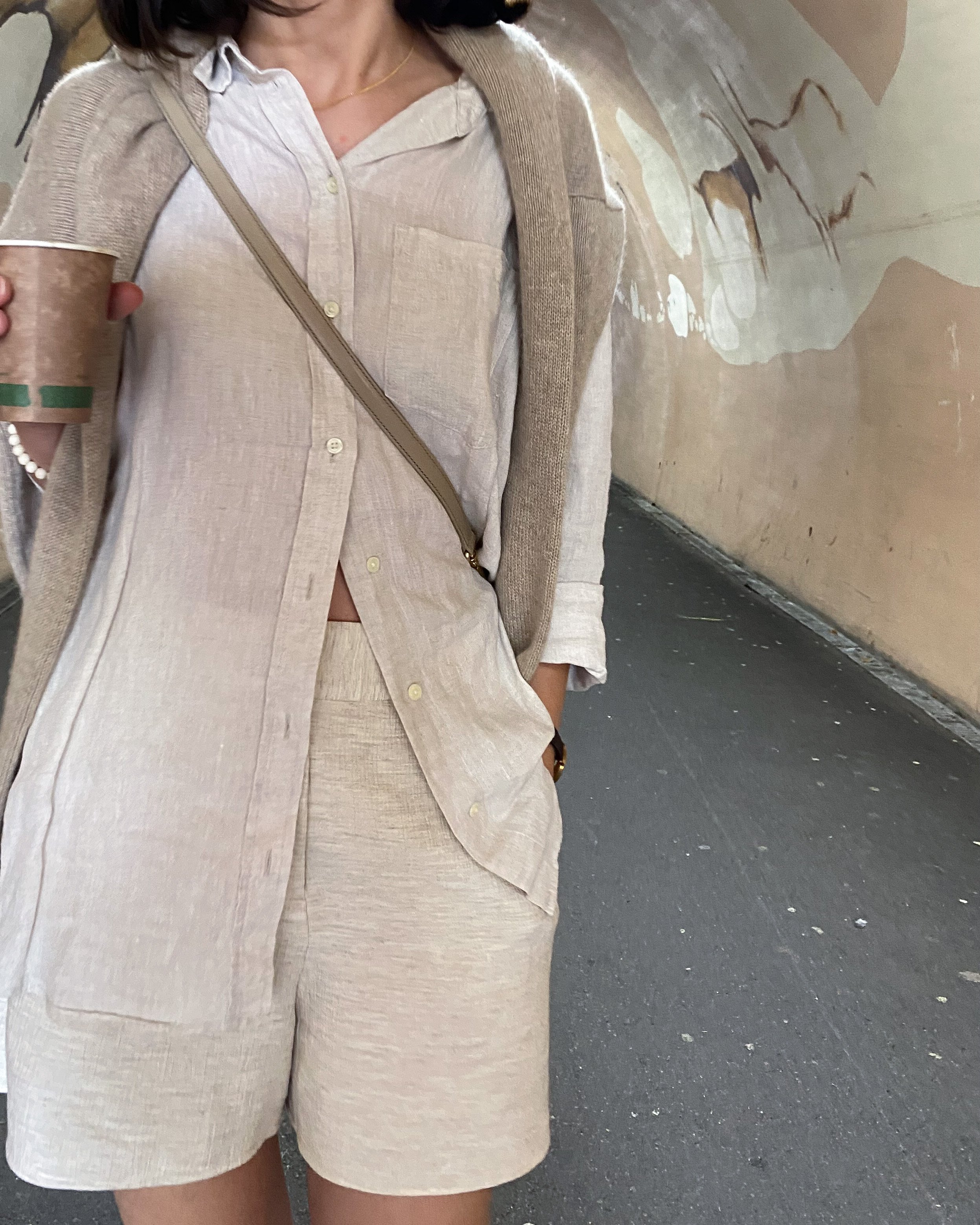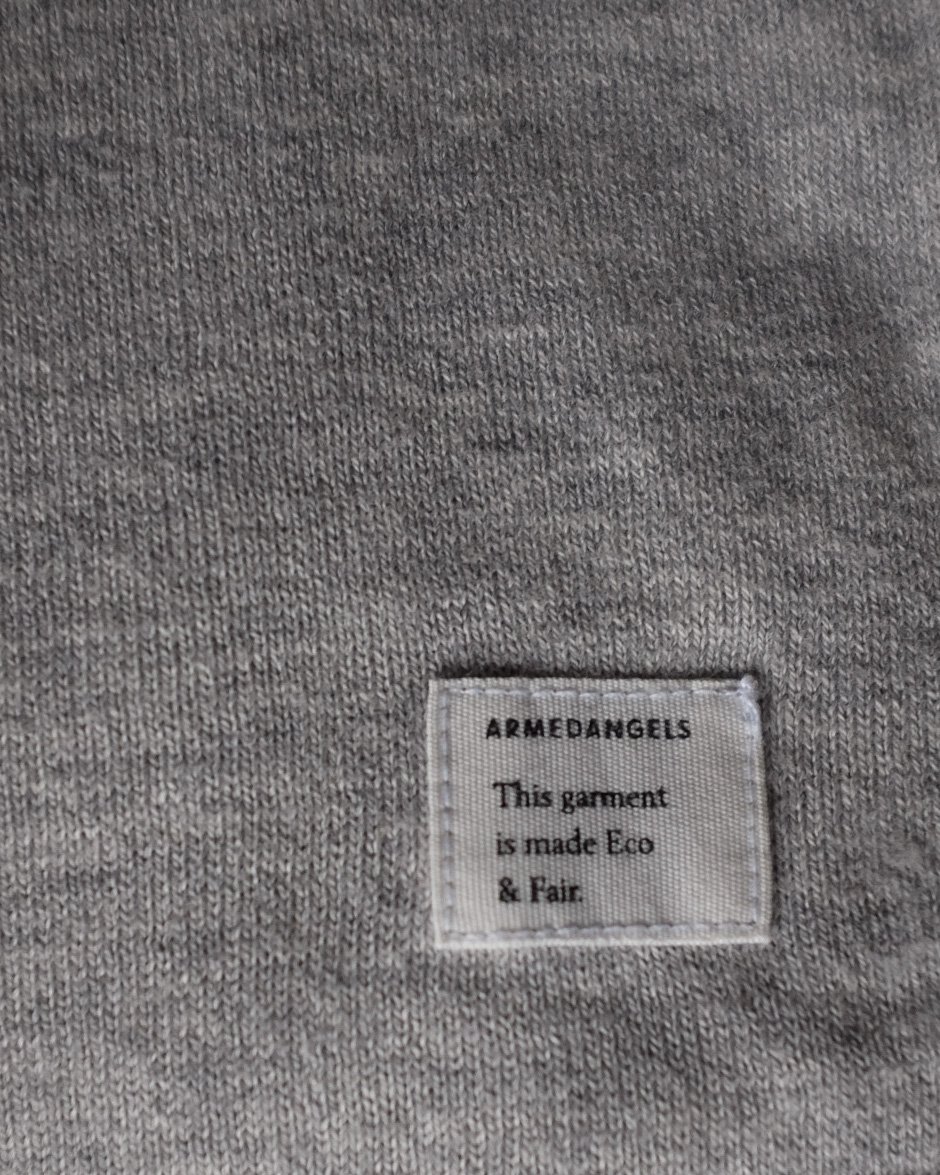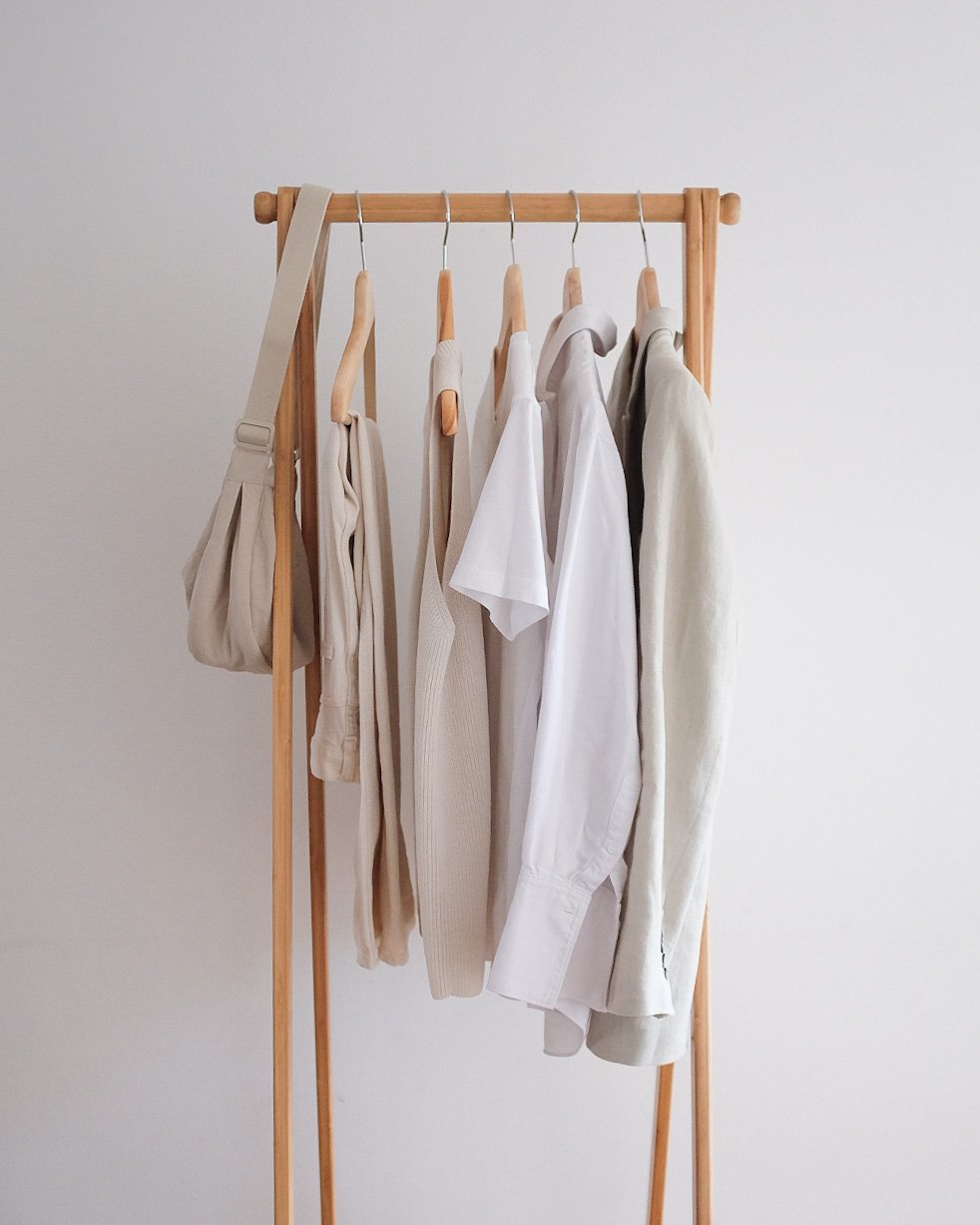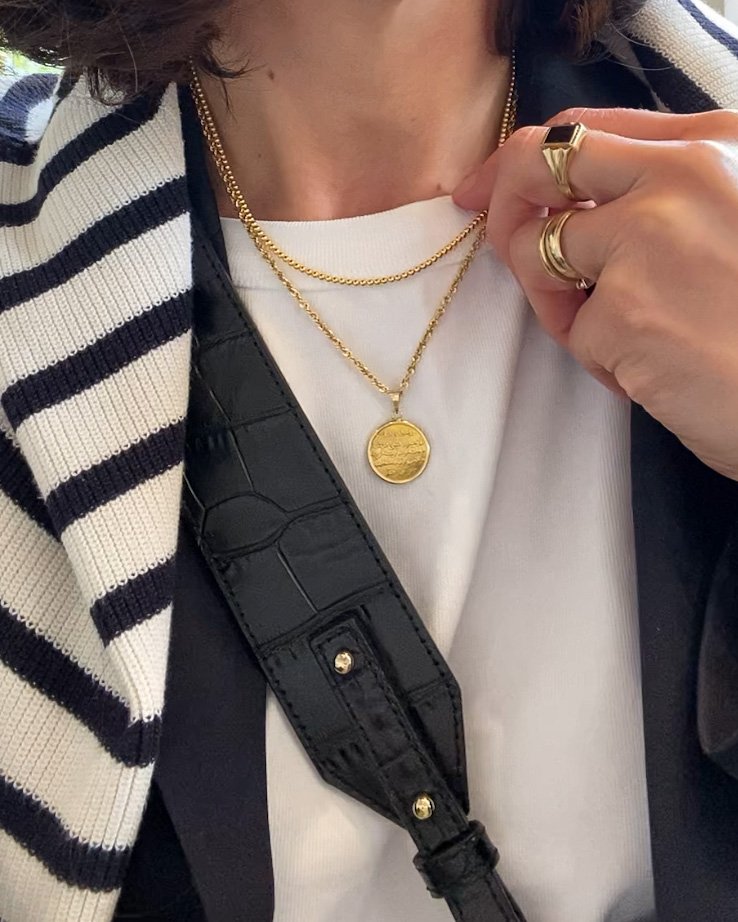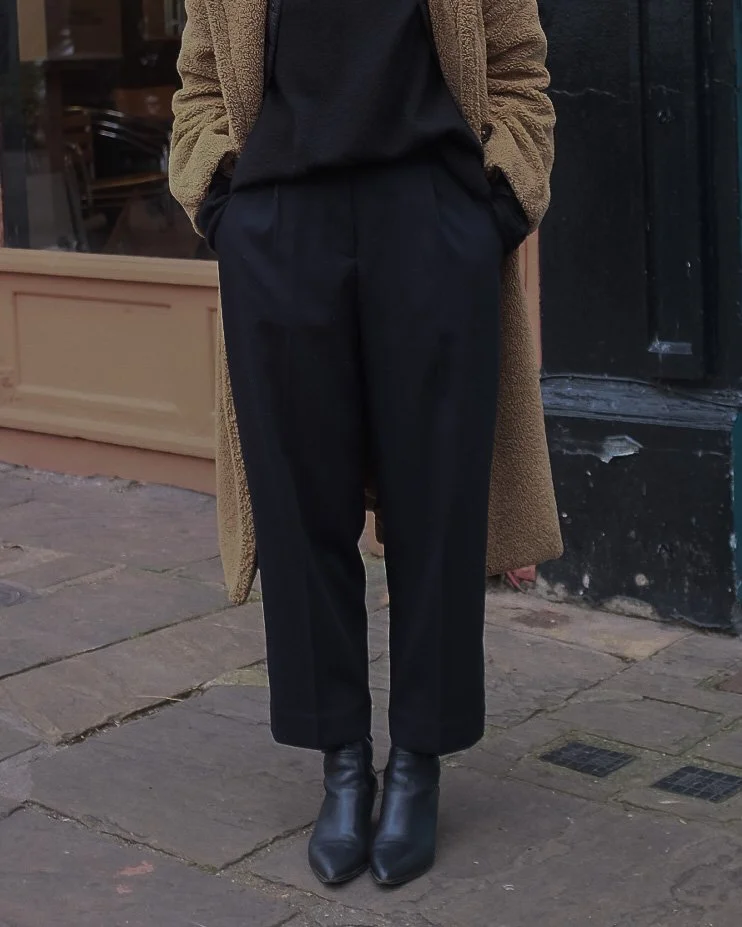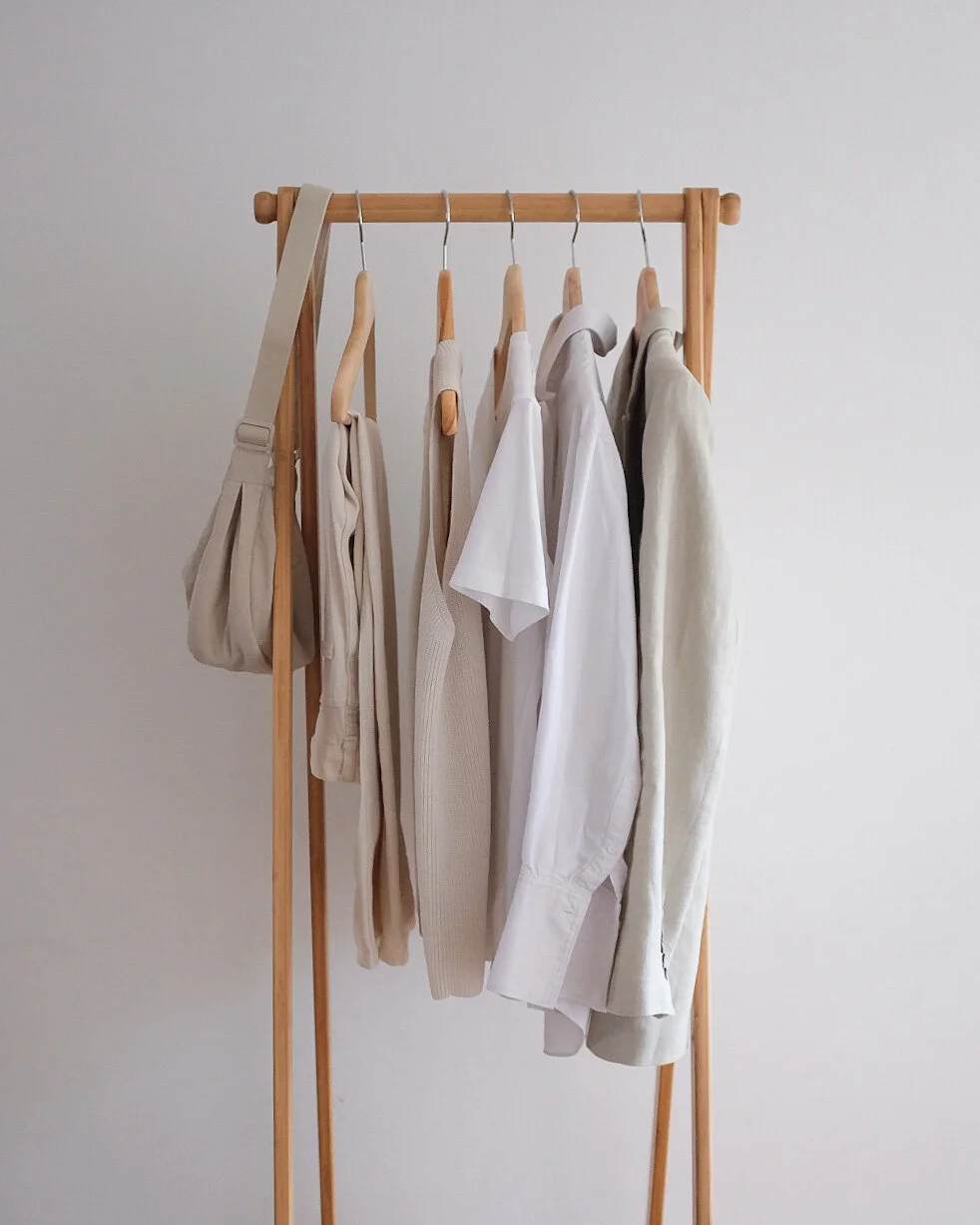Sustainable Wardrobe. How to do it?
First of all, there is nothing wrong with loving clothes and fashion. Clothes are a part of our lives and they accompany us everywhere we go, whether we care for it or not. The only difference is that some people wear their clothes because they have to (if they don't want to go naked) while others, including me, pay close attention to what they put on and how it makes them feel.
I would call it a non-verbal communication, just like body language. We communicate and express ourselves through our clothes. But what really matters is if we do it mindfully and responsibly.
After a long research and years of trying to be more eco friendly, I can say with all honesty and clear concious that more sustainable wardrobe is not hard to achieve. It sounds complicated, because everyone talks about different aspects of it. But in fact it all comes down to what Vivienne Westwood once said: BUY LESS, CHOOSE WELL and MAKE IT LAST.
The implementation and pace will be different for everyone due to our life situation, level of education (about sustainable fashion) and our values. So let’s break it down and see how we can all contribute to a greener and more circular fashion.
BUY LESS
Buying less is about buying less!! :)
Bringing less stuff into your wardrobe. I know it sounds very obvious but that’s where we start.
Most of us could get away with a half of our wardrobes and not feeling like were missing on something.
But here is a catch. Buying less doesn’t mean buying only basics in neutral colours suggested by the books and capsule wardrobe gurus. This step will only make sense if you start buying clothes you absolutely love and the things that represent your personal style.
Over the years I’ve learnt that only carefully selected clothes made me happy and were worth the investment.
CONSIDER A CAPSULE WARDROBE
A capsule wardrobe for me is a curated selection of high quality pieces that are easily interchangeable (although they may represent different style directions, e.g. romantic, classic, boho, modern, tomboy etc.) to maximise the number of outfits in your wardrobe.
You can't live in a constant “diet” mentality. Trying to be good for the Planet and not having fun with your wardrobe is not the answer. It will bounce back and you’ll either be bored with your clothes or go back to shopping (or both). Many people are sceptical about capsule wardrobe and buying less, because they have the picture of minimal, neutral tiny wardrobe ideally made up of shapeless linen pieces (btw maybe that’s why linen has such a bad reputation). It’s really not like that!!
We’re all different and we are stimulated by different things. Your capsule wardrobe can be colourful, contemporary and unique. Daria Andronescu from Wonder Wardrobe talks about a sustainable wardrobe that can express your personality and style and is far from boring and neutral.
I believe you need to find a healthy balance in your wardrobe. The more clothes you have, the less you can actually wear and enjoy them. Getting dressed in the morning with your capsule wardrobe is much easier and more fun. We have a saying in Poland: necessity is the mother of invention. That basically means, that not only you will find a way to style your limited number of clothes but you will be more creative.
UTILISE WHAT’S ALREADY IN YOUR WARDROBE
And here I'm gonna repeat the words of everyone in the sustainable fashion industry: the most eco-friendly clothes are the ones already in your closet.
It’s interesting how much time and energy we spend on searching and buying new clothes but we give so little attention to the ones we already have. It’s like they loose their value and sparkle the minute we bring them home.
I recently made a video about 10 ways to style a white linen shirt (above) where I encourage you to be more creative with your clothes and to maximise their versatility.
DECLUTTER
It became so popular that we justify throwing away a half of our wardrobes (to buy more stuff). Before you do that, look at your clothes, try them on and think if they can serve you longer. Maybe you got a polka dot skirt and you don’t know how to style it. Look for some inspiration on Pinterest, Instagram or fashion magazines. If there is a pile of clothes you love but they don't fit you properly, take them to a tailor, adjust them to your changing body (if possible).
If however, there are clothes you don’t wear anymore, they don’t fit you or simply, your style has changed, don’t keep them in the attic or the back of your closet. Sell them or donate them to your local charities so someone else can enjoy them.
SHOP SECOND HAND
Before you check any shop (even the ethical and sustainable one) remember “circular fashion model”. It basically means re-using the resources the fashion industry already has: clothes that were already produced, sold and are still in wearable condition for you to enjoy. Not to mention, it can save you a lot of money. Buying pre-loved clothes and accessories is not just about thrifting unique pieces in vintage basement shops anymore. You can find your dream designer bag or blazer online from the comfort of your home.
I love shopping second hand (although my preference is always going to physical shops) because I know I can find some unique and great quality pieces.
CHOOSE WELL
You probably know one of these phrases “buy nice or buy twice” and “I’m too poor to buy cheap stuff”. Both confirm the truth about spending money. If you invest in a high quality, well made (sometimes considerably more expensive) item, it will stay with you a very long time. I know it’s tempting to spend less and have it right away instead of saving and waiting for the best quality you can effort. But it’s worth, and in the end you save yourself not just the money but also the time and frustration.
We all want our clothes to serve us years and not one season, right?
Smart purchase also means clothes that are easy to maintain on a daily basis. Choose garments that don’t need a lot of ironing and dry cleaning. Unless it’s your wool coat or a blazer and trousers, everything else should be machine or hand washable. Don’t let anyone tell you that your linen trousers can only be dry cleaned. Linen is a natural and durable material and only a garment of questionable quality has a “dry clean only” tag on (not worth the investment in my opinion).
FABRIC COMPOSITION
I am the best example of learning through experience. When I was starting my journey with fashion and clothes I knew nothing about materials and I made all the mistakes possible. So, to save your time and money, here is what I’ve learnt (in summary). Whenever possible, avoid polyester, acrylic and other synthetic fibres. Before you buy, think what material would be the kindest to your skin and most sustainable for your wardrobe and for the Planet. What will stay in a circle the longest and later can be either recycled or go back to the biosphere. My bet (for the Summer months) is linen, organic cotton, LENZING™ ECOVERO™ or TENCEL™ (the new generation and most sustainable viscose and lyocell). For Winter I would add wool (non-mulesed and RWS certified) and cashmere.
Linen and cashmere are not only very sustainable but also easy to maintain and kind to your skin.
AVOID FAST FASHION
Cheap clothes are the reason why we buy so much. We will never appreciate our clothes and care for them properly if we see them as disposable and replaceable (just for a few pounds or dollars). In this system we don’t get the chance to build any connection with our clothes.
Why previous generations had a small selection of clothes yet looked stylish and put together? Because the clothes were expensive and very hard to get. Very often hand and custom made, so they needed a special care and lots of love.
I was also guilty of shopping excessively at places like H&M or Zara in the past and I’m NOT proud of it. The clothes sold by the fast fashion shops (including online giants like SHEIN or BOOHOO) are designed to last one season, two if you’re lucky. And that goes for both trendy pieces and classic basics. Simply, if they fall apart (and they will), you have to shop again. Of course there are some exceptions with these shops opening premium lines where they sell better quality clothes, but these are still exception and not the rule.
I’m not saying don’t ever go there, but explore your options and treat fast fashion like FAST FOOD, only have it once in a while.
CHECK THE LABEL OF EVERYTHING
I always check the care label before I purchase a new (or second hand) item. I look for 3 things:
Composition, and as stated in the “fabric composition” section above I aim for natural materials, separate or mixed with other natural or man made materials. I avoid all synthetics and first generation viscose.
Care instructions. Essentials - clothes that I wear on a daily basis must be either machine wash or hand wash in a cold water. For example, I wouldn’t buy a cream pair of trousers that can only be dry cleaned, because that would mean an extra cost every few washes and I know I would have to be very careful with this garment (not a practical item for my wardrobe). Once again, only your coats, blazers and wool trousers (but you can already find wool trousers that can be washed in a machine or hand) should have a “dry clean” on.
Ethical and/or organic certifications (e.i. GOTS, RWS, Organic Soil Asociation or any extra information that a brand is willing to share).
Also look out for spare buttons or thread attached to your care label. They usually mean that the brand pays attention to detail and wants to keep the clothes in good condition for longer.
CARE FOR YOUR CLOTHES
This involves everything, from washing to drying, to ironing and storing.
First of all, WASH YOUR CLOTHES LESS. Apart from underwear, nothing has to be cleaned after every wear. I go by one simple rule - wash it when it’s dirty! Even white jeans can go a few wears before seeing washing machine. Always choose 30 degrees cycle to save energy and prevent any shrinkage or damage to your more delicate garments. Wash your clothes inside out and unbutton any shirts or cardigans, as washing machine can loosen the threads or stretch the buttonholes. Wash your bras and any delicate garments in a mesh bag.
If you get a stain treat it right away! don’t put your clothes in a laundry basket for later (like my husband does :-P).
A TUMBLE DRYER. I understand it’s very convenient but some clothes don’t like to be exposed to a high temperature for a long time. I don't have a tumble dryer and I survive. I also don’t have a microwave oven:)
STORE YOUR CLOTHES PROPERLY
Storing your clothes not only determines how they look but also how often you reach for them and how long they last.
We all hate ironing! I know I do! But you’ve got to do it!
After washing and air drying (whenever possible) I iron all my clothes (minus underwear) and hang or fold them neatly in my wardrobe.
This way they look presentable and I can reach for anything I feel like wearing, even when I’m in a hurry.
When it comes to wool and cashmere storing is crucial. I don’t put away my winter cashmere jumpers and I take them out frequently for ventilation and to check for any signs of moths (my biggest nightmare!!). The last thing - DON’T hang your knitwear, always fold it.
Put your clothes where you can see them. When we open our wardrobes we usually reach for the things that catch our eyes, especially when we don’t have time to plan our outfits. If you have a pile of clothes stacked behind another pile of clothes, that probably means you have too much stuff and will less likely wear them.
DON’T FORGET THE ACCESSORIES
Whenever possible, choose real gold and silver, because they are more robust and can last you a lifetime. If you have gold plated jewellery, make sure to take it off when you take a shower or go swimming. This will prevent tarnishing and will prolong the life of your pieces. I understand having only precious metals is too expensive for most of us so if you have to choose, go for real gold or silver rings because your hands are much more exposed to water and hand sanitisers, and plated or vermeil pieces will tarnish quickly. I like to have a few special real gold and silver necklaces and earrings, and the rest could be a good quality plated.
Belts, shoes and Handbags
Go for the best quality you can effort and only buy the style and colour you know you’re gonna wear, leather ideally if you’re not vegan. Not everyone can effort designer bags, and frankly, not everyone wants them. Look for the local brands that make quality pieces to last. For the accessories I would 100% avoid fast fashion shops.
Remember, the most sustainable thing you can do for your wardrobe is to wear and love your clothes for as long as you can. And that’s why it’s so important to choose quality and only pieces you absolutely love. Because if you are satisfied with your wardrobe you won’t be tempted to buy more clothes.
Thank you for reading. Please, let me know your ideas for more sustainable wardrobe.






